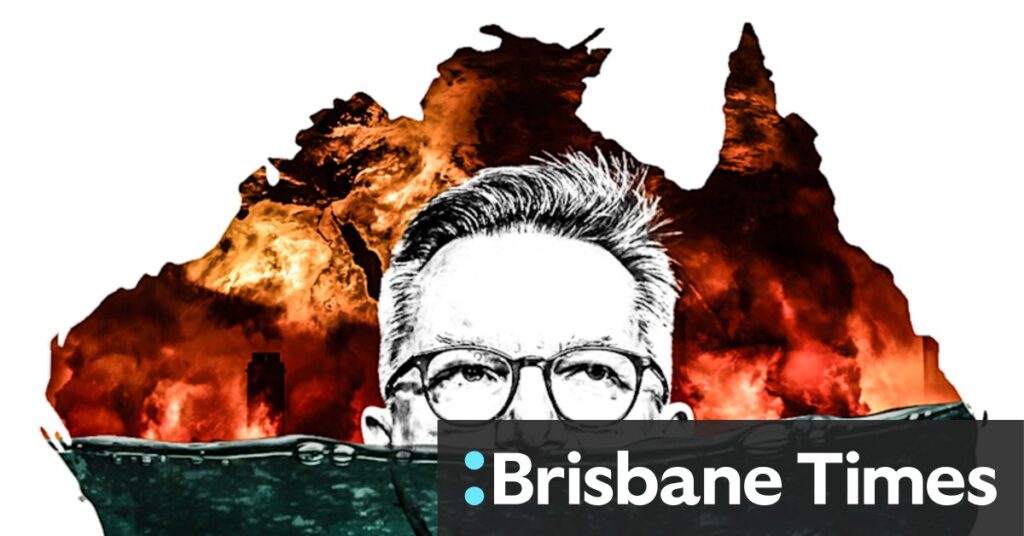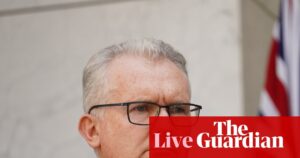
If nothing else, Peter Dunn knows how to gauge a threat. In 1970, he was shot down in a helicopter near Long Hai in South Vietnam during a reconnaissance mission while serving as a military adviser to the 302 Regional Force Battalion. In 2003, he was among the firefighters in Canberra who fought the blaze that took four lives and 470 homes, marking the first documented occurrence of a fire tornado in Australia. In 2019, he was at Lake Conjola when one of the most savage fires of that summer hit the village, resulting in the loss of 89 homes.
Fire supercharged by extreme weather scares him more than combat, says Dunn, who retired from the army as a major general and went on to serve as commissioner of the ACT’s Emergency Service Authority. “Those fires are the most horrifying things that I’ve been through,” says Dunn, now a member of Emergency Leaders for Climate Action. “In a combat situation, you’re surrounded by people in uniform, generally, and you’re armed, and you’re trained, and you’ve got plans, and you’ve got actions you take.”
Australia’s Climate Risk Assessment
Last year, Dunn was one of the 250 scientists and experts called on to contribute to the Climate Risk Assessment Report the government released on Monday. This report is part of a carefully choreographed lead-up to the announcement of the new 2035 emissions reduction targets Australia will submit at the UN General Assembly as a signatory to the Paris Agreement.
These targets, known in UN jargon as Nationally Determined Contributions, are central to the global effort to limit warming to under 2 degrees and as close as possible to 1.5 degrees. The treaty requires each country to set its own target and update it every five years, acknowledging that advanced economies like Australia must move faster than those still developing.
The report laid out the impact on Australia of global warming at 1.5 degrees, 2 degrees, and 3 degrees, painting a grim outlook. In releasing the document, Climate Change and Energy Minister Chris Bowen emphasized the need for honesty about the impacts of climate change, stating that the changes would affect every sector of society and the economy in waves that are “cascading, compounding and concurrent.”
Setting Ambitious Targets
On Thursday, Prime Minister Anthony Albanese announced that Australia’s 2035 emissions target would be 62 to 70 per cent. “This is a responsible target, backed by the science, backed by a practical plan to get there and built on proven technology,” he said.
However, climate analysts were unimpressed.
“It’s worse than I feared,”
said Bill Hare, a physicist and leader of the global climate action monitoring think tank Climate Analytics. Dr. Simon Bradshaw, a climate researcher with Greenpeace, concurred, stating,
“No climate scientist on the planet would say this target aligns with limiting warming to 1.5 degrees.”
For the government to hit the target range it announced, it will need to double Australia’s current emission reductions. This includes increasing the level of renewables in the grid to 97 per cent by 2050, boosting EV sales to half of all new vehicles by 2035, ramping up energy storage sixfold, and cutting industrial emissions by about a third.
The Path Forward
Grattan Institute energy and climate change fellow Tony Wood notes that the transition is becoming increasingly difficult. While wind and solar are now the cheapest forms of electricity generation, storing and distributing energy is proving more complicated and expensive than anticipated. The government’s Net Zero Plan acknowledges that new carbon removal technologies will be crucial as 2050 approaches, but most need further development before they can be deployed at scale.
Despite these challenges, Amanda McKenzie, CEO of the Climate Council, remains cautiously optimistic. She describes the government’s target as conservative but achievable with effort, emphasizing that every tonne of carbon prevented from reaching the atmosphere will save lives and money.
The vast and increasing difficulty of the rapid transition is no excuse not to act, says Wood. “It’s not like the choice we have is to either attempt this or give up on this. The climate is not negotiating with us. Our only real choice is to do it well or do it badly.”
As Australia prepares to present its updated targets at the UN General Assembly, the nation stands at a critical juncture. The decisions made today will shape the country’s environmental and economic landscape for decades to come.







